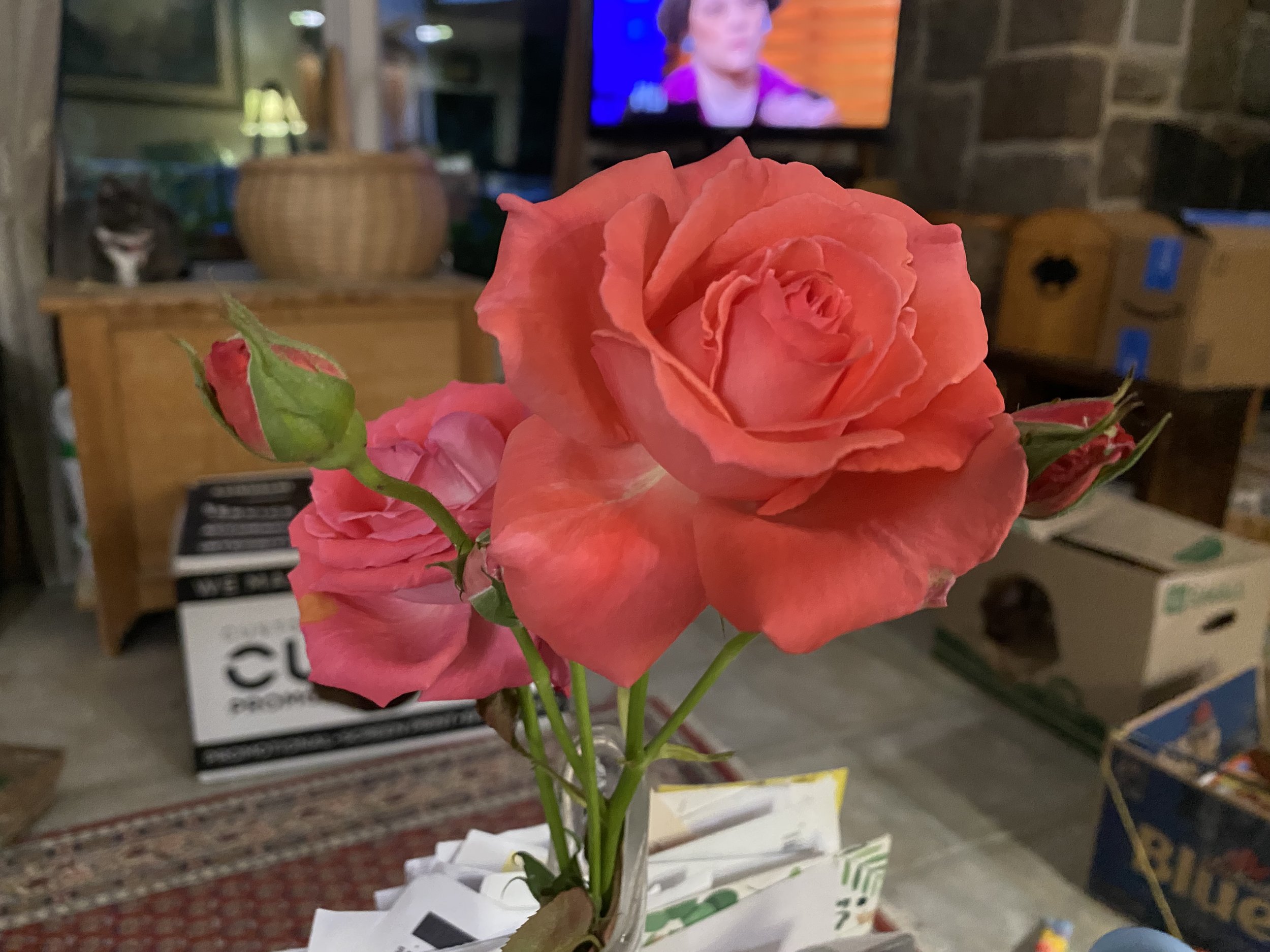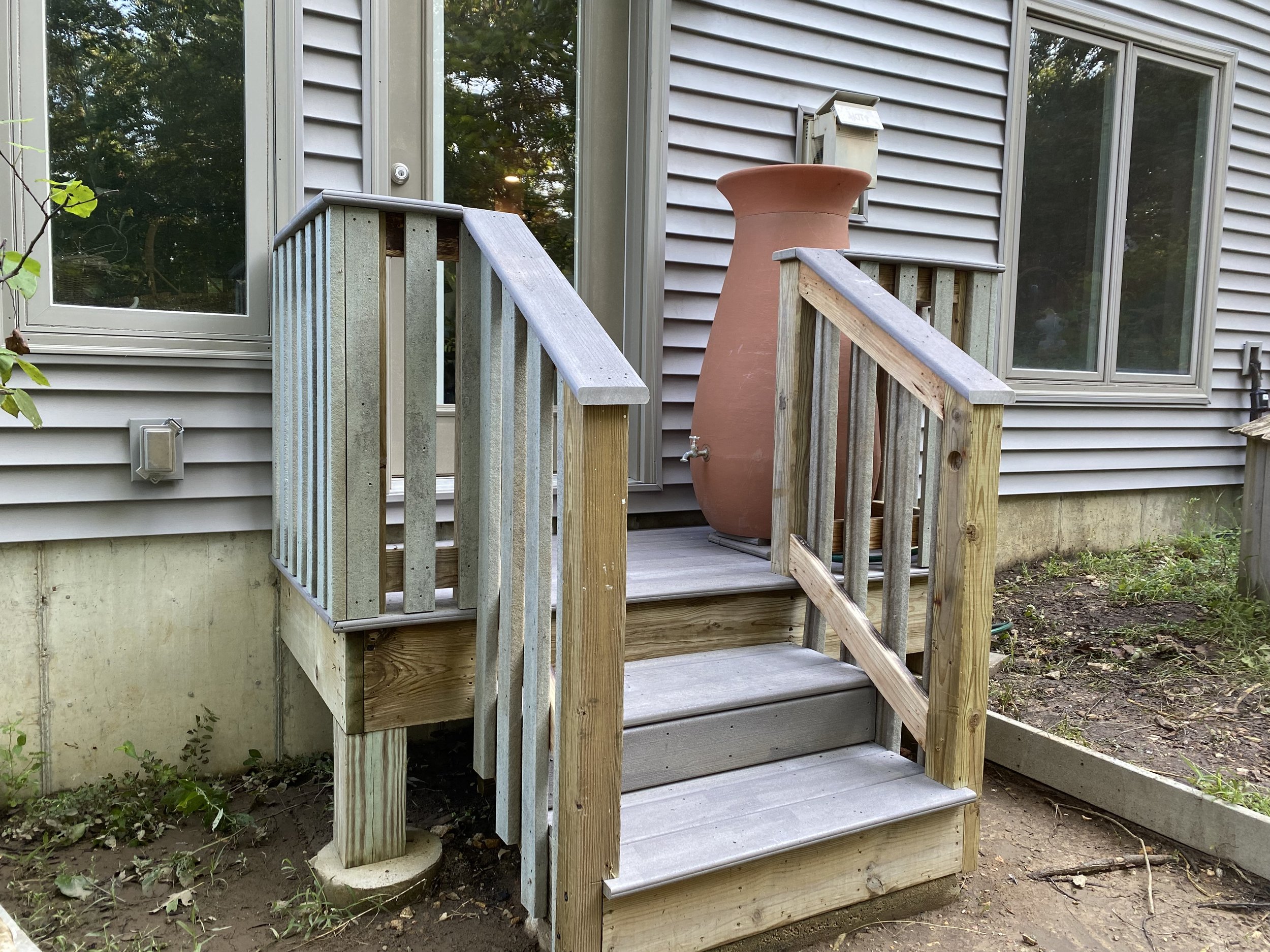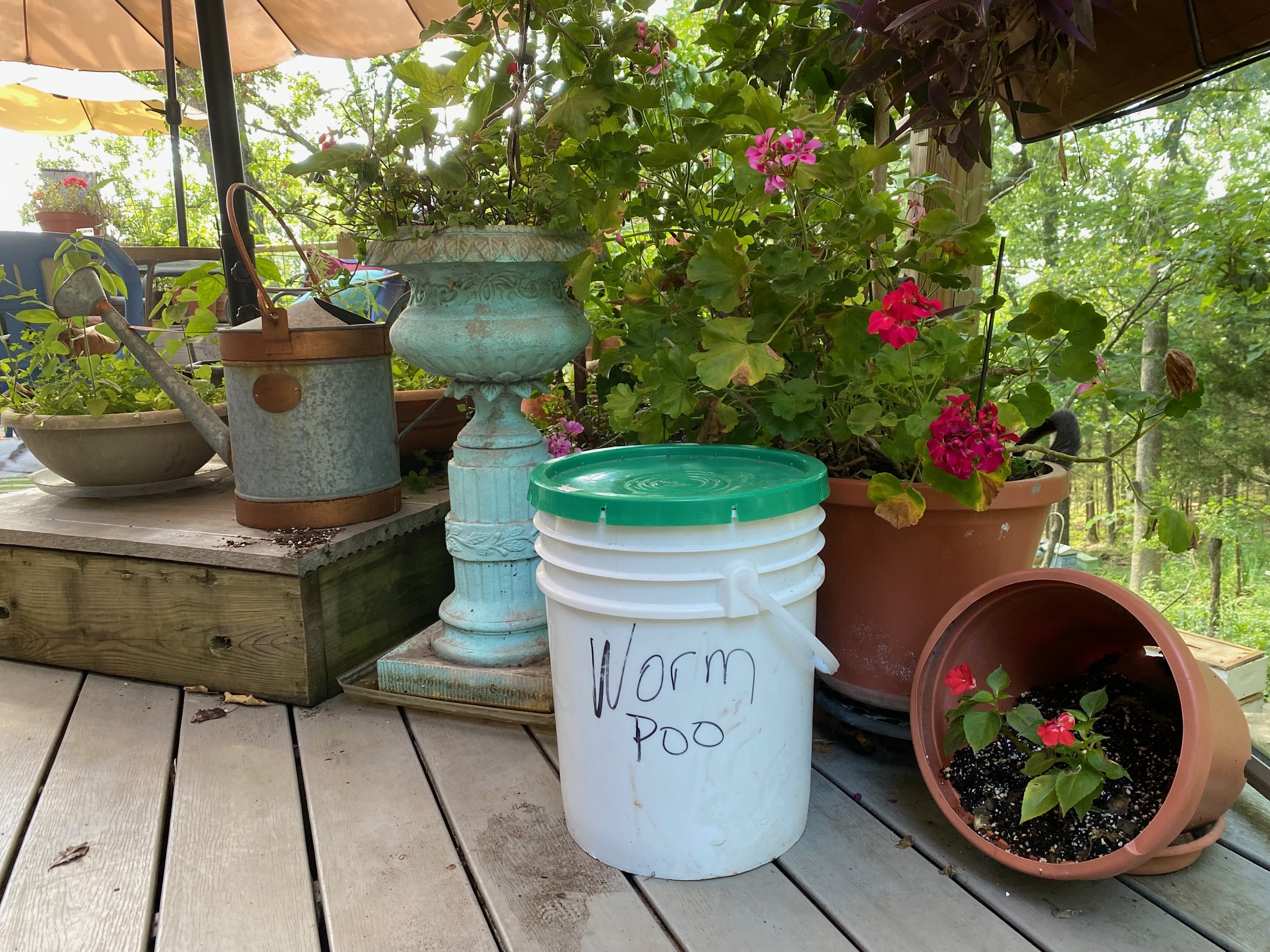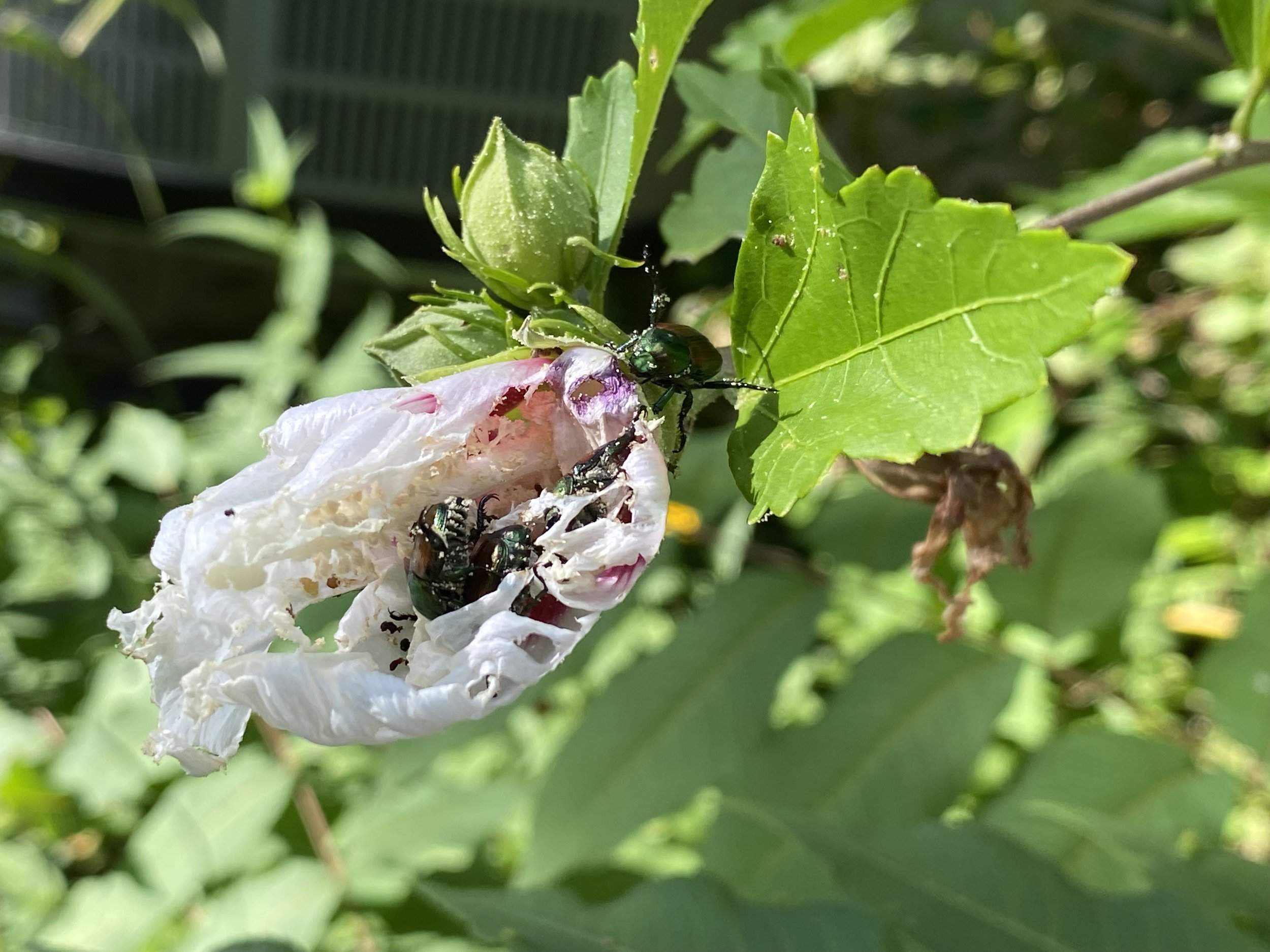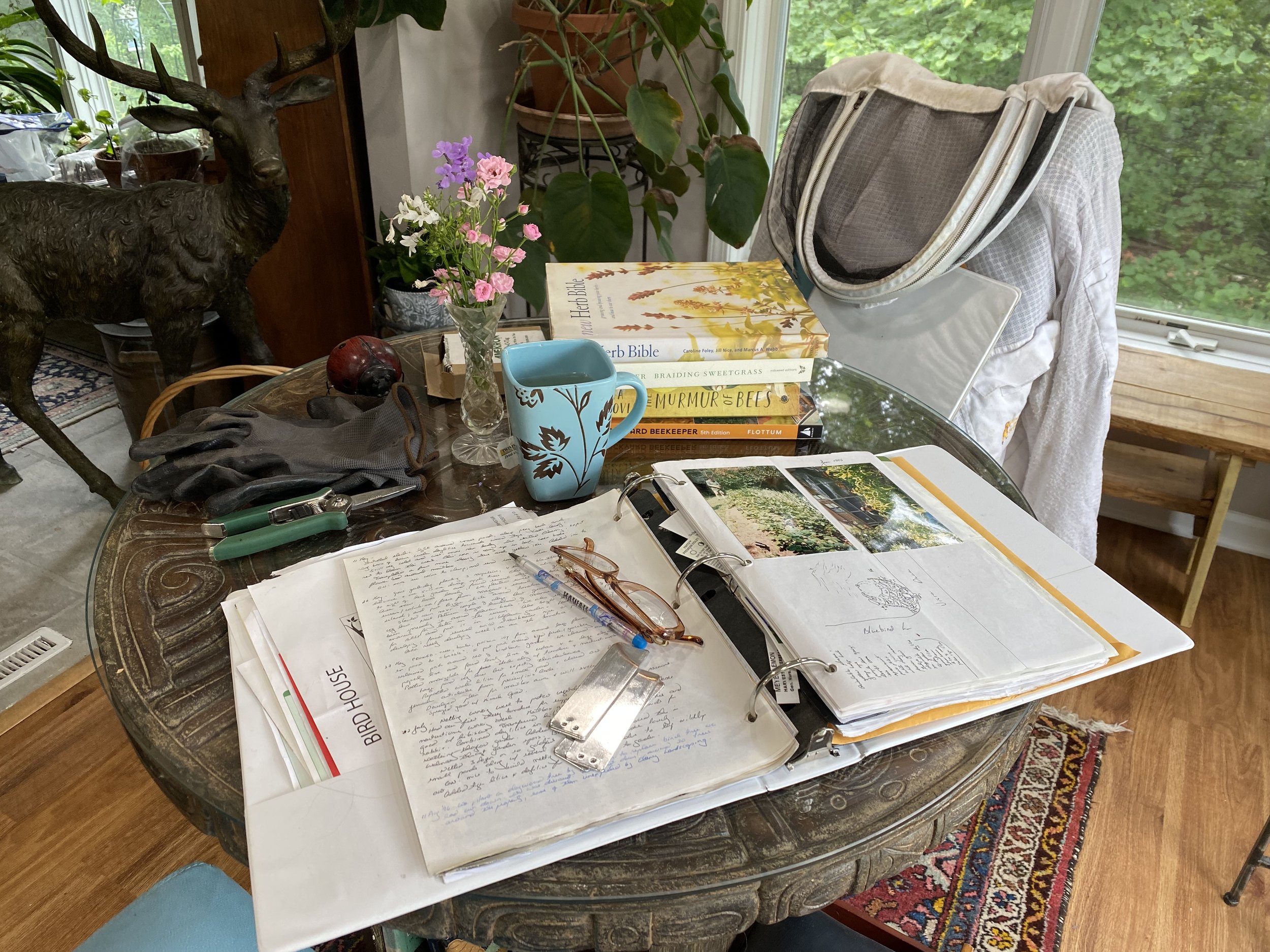How to Compost
/Composting can be done is something as simple as a coffee can. (Photo by Charlotte Ekker Wiggins)
How to Compost
All of that food, an estimated 40% of what we buy and don’t eat, can be put to very good use. It can feed the microbes, mushrooms, mycelium and plants that in turn, feed us. Yes, it’s a microbes eat mushrooms kind of world.
Now when I talk about composting in some of my lectures, some people wrinkle up their noses and tell me they don’t compost because it smells. And it’s messy. And it takes up a lot of space. And it’s complicated, and…
I’m here to tell you it doesn’t have to be any of those things. The principles are simple and, with a little change in your habits, you too can easily start to compost.
Composting areas do not have to be ugly, his charming birdhouse surrounds one of my composting stations. (Photo by Charlotte Ekker Wiggins)
And, one more usual objection, composting does not need to be ugly, composters can easily be incorporated into a garden landscape. Do you see any composters?
Okay, ready?
Start Collecting Kitchen Scraps
Probably the smelly messy part of composting is the accumulation of kitchen scraps. This is how I started composting several decades ago, and there is no mess or smell.
Know that little pull out drawer at the bottom of your refrigerator freezer? Bet you didn’t know that was a composting bin, did you.
Start composting collecting kitchen scraps in a plastic bag stored in your freezer. (Photo by Charlotte Ekker Wiggins)
Get a sturdy bag; I used to use a plastic bag. Place it in the bottom rung of your freezer. Toss in kitchen scraps when you have some.
Once the bag is full of frozen kitchen scraps except for meat, take it outside and bury it in a hole in your garden. Shrubs, trees and any established plants will appreciate the extra dinner. Or two.
Repurposed coffee cans make good small composters inside and outside refrigerators. Make sure to mark them. (Photo by Charlotte Ekker Wiggins)
If you don’t like the plastic bag idea, use a repurposed plastic coffee can. The coffee cans work well because most have a handle on the side so you can easily carry it from one spot to the next.
We use this one in the photo at our local bee club meetings to collect coffee grounds, tea bags and other food scraps. Coffee filters and tea bags can be composted, as can most paper towels and paper napkins.
A composting bucket that has filters in the lid. This one sometimes is in the refrigerator, other times on my kitchen counter. (Photo by Charlotte Ekker Wiggins)
You can also buy composting buckets that include filters in the lid. I don’t use the filters because they are not needed when the bucket is in the refrigerator. These buckets are designed to sit on a kitchen counter for easy access. The filters keep any odors from escaping.
Composting Areas
Once you get into the habit of collecting kitchen scraps, you can graduate to building a spot outside where you dump it with dried grass clippings and leaves. Most people use a garden corner in the back.
You can make a barrel out of chicken wire; repurpose a plastic barrel by making holes in the bottom so it can drain, or buy a sealed composter like the ones i have.
To make access easier, I now have two composting stations, one on either side of my house, close to where my flower beds are located. Both have two composters each so that i can let one “cook” while I am filling up the other one.
Here is how one of my composting stations is set up:
Coffee cans on left collect rainwater; the yellow bucket is used to pick up leaves. The two composters are easy to rotate to add air. The barrel on the back also helps collect material for the composters, and I use it to remove compost to spread in gardens. (Photo by Charlotte Ekker Wiggins)
There are many composters currently on the market. I prefer sealed ones because they keep uninvited visitors from rummaging through the food scraps and making a mess. Not many garden centers where i live carry them so check online.
Here is the back of my birdhouse composting station:
Repurposed coffee can, left, collects rain water. I fill up one composter, then allow it to work its magic while I work on the second one. Autumn clematis covers the birdhouse mid-summer. Don’t ask me about the red garden hose, guess it’s getting stored there for winter. (Photo by Charlotte Ekker Wiggins)
My first composter, the black one on the right, is now more than 40 years old and is still working well. These barrel composters also collect liquid that can be removed through a capped opening at the bottom. The challenge with these is that, once full, they can be hard to turn. For me.
This is my newest composter, with two separate chambers so I can fill one up and let it decompose while I work on the second one.
I like the composters with side handles, they are easier to turn when full.
Don’t stick your nose inside, of course it’s going to smell, the stuff is decomposing! (Photo by Charlotte Ekker Wiggins)
What to Compost
In general, you need half green and half brown with a dose of water to keep the microbes working.
Green are the things that come out of your kitchen:
Kitchen scraps
Coffee grounds and tea bags (coffee filters and tea bags, too)
Fresh leaves, plant trimmings, whatever green you pull out of your garden and don’t want growing
Grass clippings
Manure
Brown are the things that are already dead and decomposing:
Dead leaves and weeds
Egg shells
Wood ash from your fireplace
Wood chips
Sawdust
Straw
You can compost all year. It will take longer for these items to interact and break down so you will more quickly make compost in summer than you do in winter.
How do you know when it’s done?
It will be a black and crumbly and look very much like soil you buy at a home and garden center.
Almost finished compost, this is still a bit wet and still has some pieces to decompose but there is no smell. Almost ready to add to my flower beds! (Photo by Charlotte Ekker Wiggins)
To use, spread lightly over existing flower beds, around trees and shrubs. I try to time it before a rain so that the water helps the compost filter down into the soil and roots.
Once you start seeing the difference compost makes in your garden I will bet you will be hooked. It is such an easy thing to do and has huge implications. Soil is what keeps our plants and food sources healthy and growing so why not invest a little time to give back?
Charlotte










